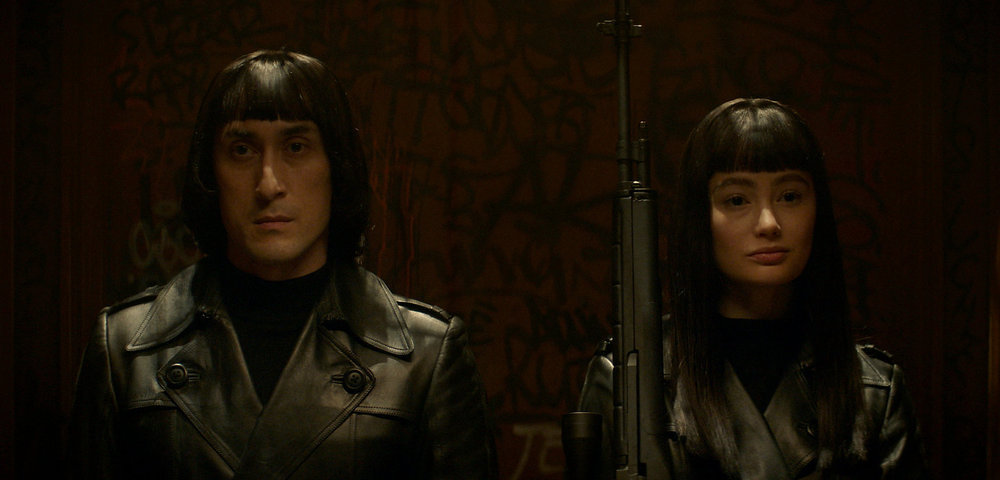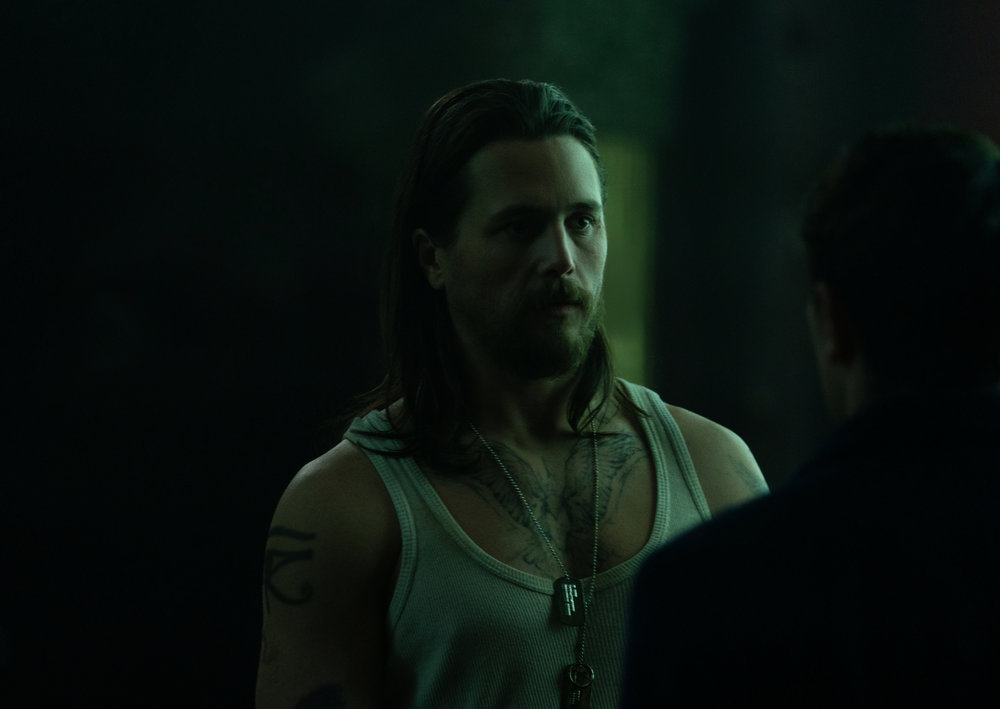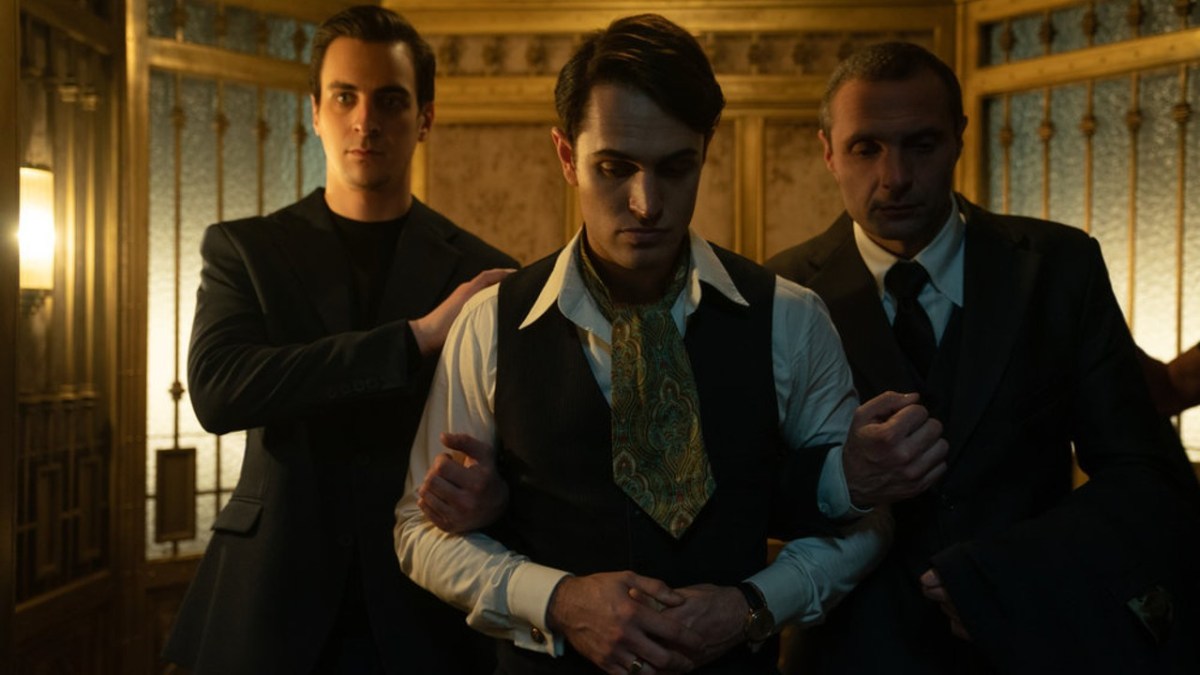“Rules,” repeats Winston Scott (Ian McShane) at various points during the John Wick film franchise. “Without them, we live with the animals.”
The John Wick franchise is obsessed with the rules that govern its secret society of assassins and criminals. In particular, the films explore the way that such a system is inevitably designed to benefit those who hold power within it. As such, one of the more interesting things about The Continental: From the World of John Wick, the franchise’s new three-part prequel miniseries, is the way that it provides a counterpoint to that argument. The Continental depicts a world that exists largely without rules.
The John Wick film franchise depicts a hermetically sealed world. John (Keanu Reeves) only fleetingly interacts with people who exist outside this subculture of killers-for-hire. The most prominent civilian in the franchise is John’s wife, Helen (Bridget Moynahan), who dies in the opening montage of the first film. Virtually every character in the film franchise has some relationship to this community, even those who exist in opposition like the Bowery King (Laurence Fishburne).
Watching the John Wick movies, a viewer might assume that the real world is just a twisted reflection of this underground community. When a police officer (Thomas Sadoski) comes knocking at John’s door, it’s enough for him to ask the former contract killer, “You working again, John?” When John needs to dispose of some bodies, he can pass a gold coin to Charlie (David Patrick Kelly). Even the local chop shop run by Aurelio (John Leguizamo) is wired into this system of criminality.
At times, the world of the John Wick movies feels like that depicted in The Matrix, which makes sense given that director Chad Stahelski worked as Keanu Reeves’ stunt double on those films. At various points in the series, notably John Wick: Chapter 2 and John Wick: Chapter 4, entire action sequences play out as crowds of extras wander through the background of the shot completely oblivious. It is as if they belong to another world entirely.

THE CONTINENTAL: FROM THE WORLD OF JOHN WICK — “Night 1” — Pictured: Mishel Prada as KD — (Photo by: Katalin Vermes/Starz Entertainment)
This approach works for a number of different reasons. In practical terms, it is just a clever conceit. It allows the audience to enjoy the movies without worrying about possible collateral damage. There are no civilians to get caught in the crossfire, so it is a lot easier to just go with the flow. It also underscores the movies’ core themes — the idea that as long as violence takes place within rigidly defined and carefully codified structures, it is easy to accept.
It also makes the films feel somewhat timeless, as if they unfold in a strange dream world. Although the first four films were released over nine years, between 2014 and 2023, they seem to unfold within a compressed timeframe. “Well, we figured the first three movies almost happened in like a week, week and a half, somewhere in there,” Stahleski explained in the lead-up to the release of the fourth film. “So within a year, I think it all happens. I would say almost within seven to eight months.”
Which year is that? Is it 2014? 2023? Somewhere between the two? Watching the John Wick movies, it’s hard to tell. There is very little in the films to date them to a particular time. Indeed, it can often seem difficult to tie them to a particular place. Much of the film franchise unfolds in a version of New York, but one that feels strangely unreal. The landmarks of this shadow-city include fictional locales like “The Continental” or the “New Modern NYC.”
With all of this in mind, it is striking that The Continental works so hard to anchor itself in a specific place and time. It is a series with a very firm grasp of history and geography. More than that, it is also a show about the relationship between this isolated world of professional murderers and the city at large. While the bulk of the John Wick film franchise is told from the perspective of “an organization that predates the Roman Empire,” The Continental looks at this entity from the outside.
This is obvious from the show’s opening moments. In 1955, as children, Winston (Fflyn Edwards) and his brother Frankie (Ben Robinson) sit in a police interrogation room. It’s an interaction with law enforcement that seems completely alien to the internal logic of the John Wick films. John never had to deal with cops or consequences like this. When the series jumps forward in time to join Winston (Colin Woodell) as an adult, he’s casually name dropping David Bowie and Tony Defries.

THE CONTINENTAL: FROM THE WORLD OF JOHN WICK — “Night 1” Pictured: (l-r) Mark Musashi as Hansel, Marina Mazepa as Gretel — (Photo by: Starz Entertainment)
As much as The Continental brands itself as “From the World of John Wick,” it is also much closer to the real world. Frankie (Ben Robson) is reintroduced leaving the Continental and heading to the Wall Street Subway Station, creating a firm sense of spatial awareness and geography. Detective Mayhew (Jeremy Bobb) acknowledges that the Continental itself is in “the Financial District.” Director Albert Hughes makes a point to include the World Trade Center in as many establishing shots as possible.
While the John Wick movies have their own musical landscape, largely built around Tyler Bates and Joel J. Richard’s classic theme, the soundtrack to The Continental is much more tied to the popular culture of the era in which it is set. “I come from a past of doing needle drops, my brother and I do it all the time,” explains Hughes of the show’s soundtrack. “The John Wick films had their hyper-stylized impressionist take on New York. We brought our own with a ‘70s feel.”
The characters in The Continental do not have that comforting remove that defines the John Wick film franchise. They are products of the world around them, rather than existing outside of it. In particular, Frankie is defined by his experiences during the Vietnam War. It’s tied to his work at the Continental. “The war made him efficient, cold,” explains Cormac O’Connor (Mel Gibson). “Earned him a promotion.” Frankie is married to Yen (Nhung Kate), a Khmer Rouge soldier he met overseas. He deals guns with his old war buddies.
This makes sense in the larger context of Albert Hughes’ filmography. Working with his brother Allen, Hughes was always a director with a strong sense of place. In some ways, the Hughes brothers didn’t so much capture the reality of a given time and place as the feel of it: 1990s Los Angeles in Menace II Society, 1880s London in From Hell. The 1970s post-Vietnam New York setting of The Continental provides an interesting echo of Albert Hughes’ work on Dead Presidents.
This dissonance between 1970s New York and the world of John Wick is effective. “Brothers in Arms” waits 55 minutes before it shows the lobby of the eponymous hotel, creating both anticipation and alienation. When Winston arrives, he is brought in through the service entrance. Later, the audience follows detective K.D. DeSilva (Mishel Prada) into the lobby. K.D. has no knowledge of this secret society or its customs. In a scene that is delightfully unsettling in its “wrongness,” she pays her for her drink with cash rather than with a gold coin.

THE CONTINENTAL: FROM THE WORLD OF JOHN WICK — “Night 1” — Pictured: Ben Robson as Frankie– (Photo by: Katalin Vermes/Starz Entertainment)
The show is also very specific about when it is set. There is an offhand reference to an ongoing garbage strike, part of the city’s rich history. There were a number of high-profile strikes in the second half of the 20th century: 1968, 1975, and 1981. The fact that Hughes and the production team keep referencing the 1970s suggests that 1975 is the most likely candidate. Still, there would be something poetic about setting The Continental in 1981, New York’s infamous “most violent year.”
The Continental very clearly unfolds against the backdrop of New York City’s urban decay during the 1970s, the era known as “Fear City.” Crime was rampant, particularly on the subway. City residents lived in terror. New York itself spiraled into debt, with President Gerald Ford famously misquoted as refusing any bailout by telling the city to “drop dead.” It’s an era that lingers in the public memory, often with a very strange sense of nostalgia.
The Continental depicts a city that is falling apart. “New York these days is a proper shithole,” Uncle Charlie (Peter Greene) complains at one point. “City’s getting rougher every day,” Lou (Jessica Allain) tells Winston. Everything in The Continental is dirty and covered in graffiti. When Frankie goes to the subway station, it’s covered in graffiti. The train that pulls up is also covered in graffiti. When Winston borrows Charlie’s car, even the tarp covering it ends up covered in graffiti.
In her introductory scene, K.D. stares out the window of her apartment and watches as a dog owner refuses to pick up after his fouling animal. It’s an effective metaphor for the decline and corrosion of these civic bonds. Lou returns home from a botched gun deal to find the window to her family’s business has been broken, a direct allusion to the “broken window” theory of criminology — that the visible signs of crime inevitably encourage more crime.
In contrast to the New York City of the John Wick films, the New York City of The Continental is a world without rules. It is pure chaos. It’s an interesting creative choice that serves not only to distinguish The Continental from the John Wick films, but also to start a conversation between them. If nothing else, the version of New York that appears in The Continental suggests why Winston would come to value rules so much.






Published: Sep 22, 2023 09:18 am